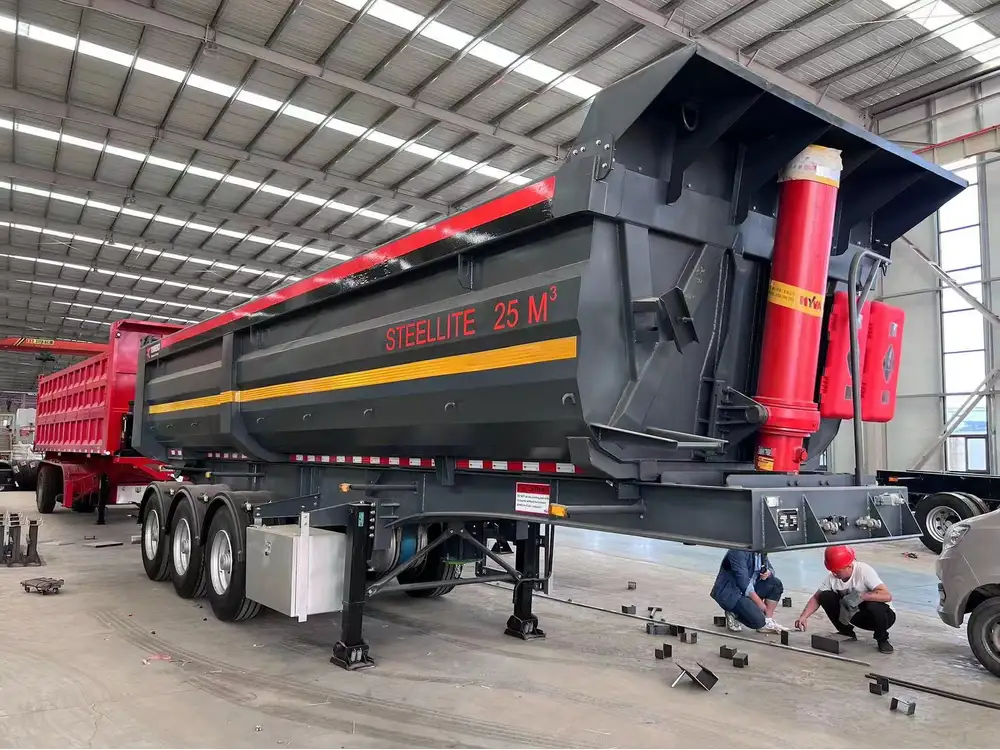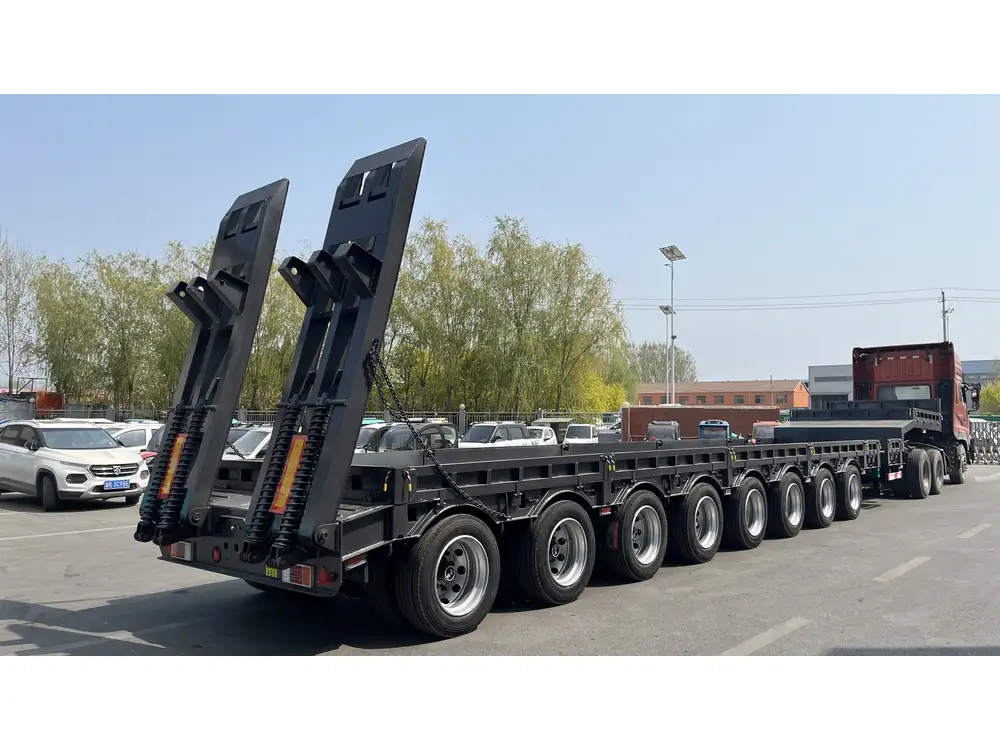When it comes to the operation of semi-trailers, the question of whether to use lights during the day often arises. Understanding the legal requirements, safety implications, and best practices can make a significant difference in ensuring compliance and enhancing road safety. In this article, we will dissect the intricacies surrounding the use of semi-trailer lights during daylight hours.
Legal Requirements for Semi-Trailer Lighting
Understanding Federal and State Regulations
In the United States, the regulations surrounding semi-trailer lighting are governed by both federal and state laws. The Federal Motor Carrier Safety Administration (FMCSA) sets forth guidelines that all commercial vehicle operators must follow. Here’s a brief overview:
Federal Requirements: According to FMCSA regulations, all commercial vehicles, including semi-trailers, must be equipped with specific lighting regardless of the time of day. For instance:
- Headlights must be operational at all times.
- Turn Signal Lights must be visible from both the front and the rear, operating day or night.
- Brake Lights are required to signal deceleration, enhancing visibility in all conditions.
State-Specific Regulations: Many states have additional requirements related to semi-trailer lighting that may stipulate the use of auxiliary or supplementary lighting during daylight hours. It’s vital for operators to familiarize themselves with local regulations to avoid hefty fines and enhance safety.

Comparison of Daylight Lighting Regulations Across States
| State | Daylight Running Lights Required | Additional Lighting Regulations |
|---|---|---|
| California | Yes | Ambulatory lighting for trailers |
| Texas | No | Clear signal requirements for larger trailers |
| New York | Yes | Reflective tape on the sides and back |
| Florida | No | Flashing lights for oversized loads |
Safety Considerations: Why Lights Matter During the Day
Enhancing Visibility
Even during daylight, visibility can be impaired due to various factors—weather conditions, road environments, and the inherent size of semi-trailers contribute to potential hazards. Utilizing semi-trailer lights during the day enhances the visibility of these large vehicles, which is crucial for the safety of both the driver and other road users.
Contrast Against Sunlight: The harsh sunlight can wash out the visibility of larger vehicle profiles. Lights provide a contrasting signal that alerts other drivers to the presence of a semi-trailer, preventing potential accidents.
Weather Conditions: In conditions like fog, rain, or snow, having lights on can be beneficial as they cut through the veil of obscurity, providing a clearer indication of the vehicle’s presence.

Reducing Accidents and Liability
Bluntly speaking, reducing accidents does not merely save lives; it also protects operators from legal repercussions. An accident can lead to litigation claims, increased insurance premiums, and a tarnished company reputation. Using semi-trailer lights during the day can help mitigate these risks by making the vehicle more apparent to surrounding drivers.
Best Practices for Using Semi-Trailer Lights During the Day
Know Your Vehicle Specs
Each semi-trailer may have different lighting requirements based on its make, model, and purpose. Understanding these specifications ensures compliance and optimizes safety.
- Check Manufacturer’s Guide: Always review the manufacturer’s recommendations regarding lighting usage.
- Install Additional Lights If Necessary: If your semi-trailer will operate regularly in low-visibility conditions—regardless of the time of day—consider outfitting it with additional lights.

Proper Maintenance of Lights
- Routine Inspections: Regularly check all lights (headlights, brake lights, turn signals) to ensure they are functioning properly.
- Cleaning and Replacement: Clear any dirt, grime, or debris from light fixtures that could hinder performance. Replace burnt-out bulbs promptly.
Utilize Signal Indicators
Using turn signals and brake lights appropriately is essential to communicate with other road users effectively. Engaging these signals well in advance gives drivers ample warning to adjust their speed or position accordingly.
Common Misconceptions About Daytime Semi-Trailer Lighting

Misconception 1: Daytime Lights Aren’t Necessary
Many drivers wrongly assume that since it is daytime, lights are redundant. However, as established earlier, daylight visibility varies considerably. Ignoring this reality can prompt unfortunate accidents.
Misconception 2: LED Lights Are Only for Nighttime Use
While traditional logic might suggest that brighter lighting equates to night use, modern LED lights can significantly increase visibility during the day as well. Their brightness and focus enhance perceptions without being overly intrusive to other drivers.
Misconception 3: Lights Alone Can Ensure Safety
While lights increase visibility, they should not be the sole precaution taken. Always combine visible signaling with vigilant driving practices, such as maintaining safe following distances and avoiding distractions.

Continuous Education and Best Practices for Semi-Trailer Operators
The transportation industry is dynamic; regulations and safety guidelines evolve. Continuous education is paramount for semi-trailer operators to keep abreast of these changes.
Recommended Resources for Education
- FMCSA Website: Regular updates on regulations and guidelines.
- Local Safety Courses: Participate in workshops or training sessions that focus on roadway safety and semi-trailer operation.
Encouraging Safety Culture within Organizations
Promote a culture of safety within your organization that emphasizes the importance of proper lighting, visibility, and adherence to regulations.
- Regular Safety Meetings: Allocate time for discussions on the importance of lighting and road safety.
- Incentives for Safe Driving: Consider implementing a rewards system for drivers who demonstrate exemplary safety practices.

Conclusion: Making The Right Choice for Safety
The question of whether to use semi-trailer lights during the day transcends mere compliance with regulations; it embodies a commitment to safety. By understanding the legal requirements, safety implications, and best practices, operators can significantly enhance the safety of semi-trailers on the road.
We encourage all operators to stay informed, ensure proper vehicle visibility, and prioritize the safety of themselves and others on the road. As the landscape of transportation continues to evolve, proactive measures in lighting and vehicle safety will always remain paramount. In the end, the choice is clear: using semi-trailer lights during the day is not merely a recommendation; it is a necessity.



